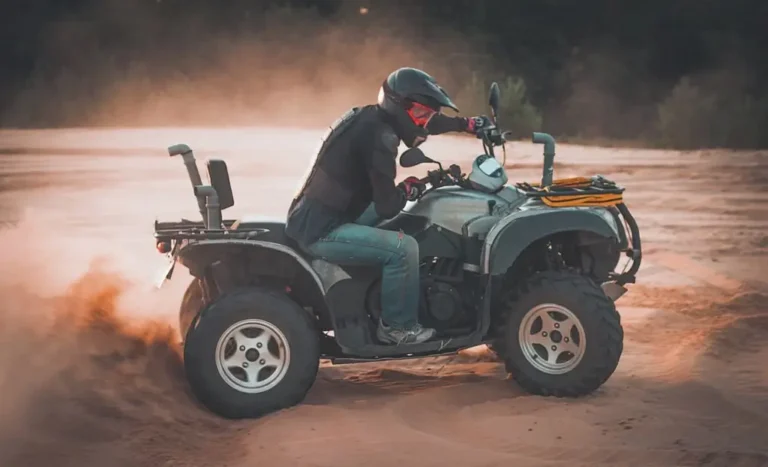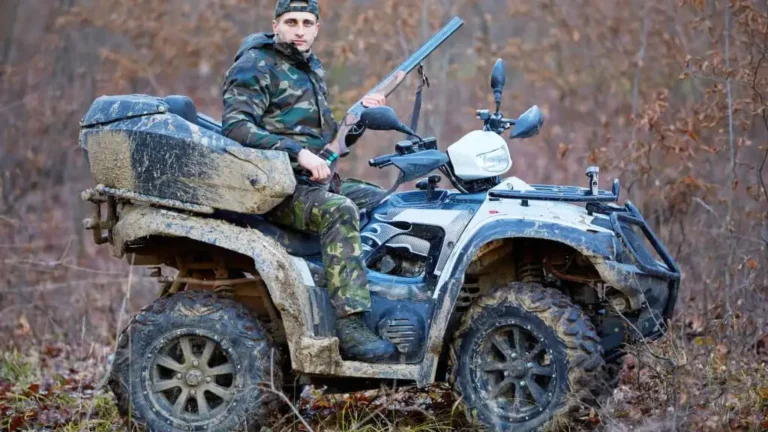Top 10 Strategies How to Prevent ATV Accidents
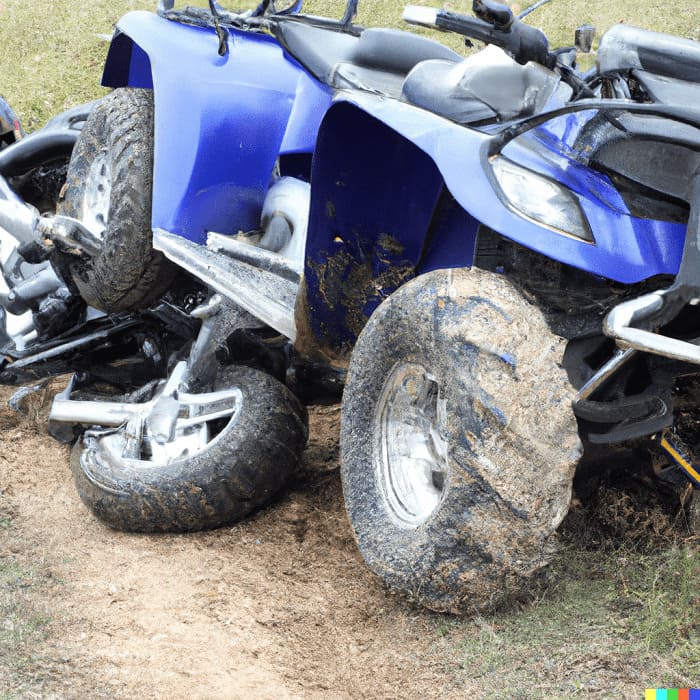
All-terrain vehicles (ATVs) are used for off-road adventure which is a popular recreational activity that allows you to explore the outdoors and rugged terrain. However, ATVs can also be dangerous if proper safety precautions are not taken. ATV accidents cause hundreds of deaths and over 100,000 injuries in the U.S. every year. The majority of these accidents are preventable by following some basic safety guidelines.
In this blog post, we will provide the top 10 proven strategies to prevent ATV accidents and injuries. We will also answer some frequently asked questions about ATV safety at the end. Following these essential guidelines can help ensure you have a safe and enjoyable ATV riding experience.
Also Read: How to Drive an ATV Vehicle? A Quick Start Guide
Why ATV Accidents are Dangerous?
Globally, more than half of all vehicle accidents happen to young adults aged 15 to 44. But ATVs are especially dangerous for young adults and kids. Between 1982 and 2015, there were more than 3,000 ATV accidents where kids under 16 were hurt or killed (which is about 22% of all ATV accidents during that time). More than 1,000 of those accidents involved kids under 12.
However, riding all-terrain vehicles is really risky for everyone, not just young people. These vehicles are often used in places with bumpy paths, and riders go really fast without wearing much safety gear. This makes accidents really serious. Also, some riders think they can do drugs and drink alcohol while riding since they don’t need a special license. They might not follow safety rules or make good choices while riding.
Top 10 Guidelines to Prevent ATV Accidents
While it’s not always easy to stop every ATV accident, a lot of them can be avoided if you’re careful. If you want to make sure you don’t get seriously hurt while riding an ATV, there are some important things you can do to stay safe and prevent ATV accidents & injuries.
1. Take a Safety Training Course
To prevent an ATV accident, it is highly recommended to take a hands-on safety training course. This course can provide you with valuable skills and knowledge to ride the ATV safely and reduce the chances of accidents. Even if you are an experienced rider, a training course can sharpen your skills and refresh important safety knowledge.
A certified instructor will cover topics like how to properly control and maneuver the ATV, handle unexpected situations, usage of proper safety gear, navigate different terrains, and emergency braking. So, before you hit the trails, make sure you invest some time in this safety training – it’s a smart move to protect yourself and others.
2. Follow Age Recommendations
Safety should be a top priority, especially when it comes to young riders. Children under 16 should never operate an adult-sized ATV because these vehicles are too large and powerful for young riders to control safely. It’s crucial to stick to the guidelines provided by the manufacturer regarding the minimum age and size requirements for different ATV models.
Must follow the manufacturer’s minimum age and size requirements for each ATV model. For younger riders, opt for youth-sized ATVs that are more appropriate. Additionally, it’s a good practice to supervise riders who are under 16 and to ensure that they ride ATVs without any passengers on board.
3. Read the Owner’s Manual
Before you start riding a new ATV, it’s crucial to take some time and thoroughly read the owner’s manual and all the warning labels that come with it to prevent accidents and injury. The manual is like your personal guidebook for operating the ATV and provides essential information on the vehicle’s capabilities, how to inspect and maintain the ATV, explanations of the controls, and safety precautions.
So, whether you’re a beginner or an experienced rider, investing some time in reading and understanding the manual can really make a difference and we can prevent ATV accidents by enjoying a safe ride.
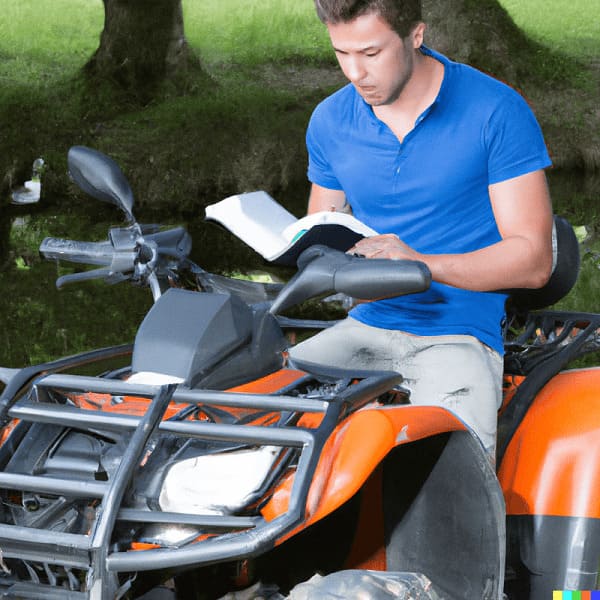
4. Perform Pre-Ride Inspections
Inspecting your ATV before each ride can prevent accidents caused by equipment failures or worn parts. Taking a few moments to thoroughly examine your vehicle can make a significant difference in your safety on the trail. Make sure to check the tires, brake system, throttle, steering, chain/drivetrain, fluid levels, lights, and controls.
Moreover, pay extra attention to details like the cleanliness and proper adjustment of mirrors and reflectors. These seemingly minor elements contribute to your overall visibility and awareness on the trail. These safety measures contribute to maintaining your ATV’s optimal performance and, most importantly, ATV accident prevention.
Also Read: How to Choose the Best LED Light Bars for ATVs
5. Wear Protective Gear
The most important safety precaution is to always wear proper protective gear when riding an ATV. This includes a Department of Transportation (DOT) approved helmet, goggles, long sleeves and pants, over-the-ankle boots, and gloves. Helmets are especially important because they can prevent serious head injuries if something goes wrong while you’re riding. They’re like your best defense against traumatic brain injuries.
Additional protective gear like long sleeves and pants help protect your skin from abrasions if you fall, and the over-the-ankle boots give your feet and ankles the support they need. ATV riding Gloves not only protect your hands but also give you a better grip on the ATV’s handles.
Also Read: Tips to Choose the Best ATV Riding Helmet
6. Avoid Paved Roads
Riding ATVs on paved roads can be really dangerous because it raises the chances of getting into accidents with vehicles that go much faster. ATVs are designed for off-road use at lower speeds. So, it’s best to stay away from using them on regular roads if you can. If you must cross a road, come to a complete stop, look both ways and cross at a 90-degree angle.
7. Ignore Excessive Speed
Excessive speed often plays a huge role in causing ATV accidents, particularly among riders who are new to operating these vehicles. It’s really important to remember that riding too fast can lead to serious problems. Always operate at safe speeds based on your riding ability, the terrain, visibility conditions, and manufacturer guidelines.
Going really fast and then suddenly applying brakes or making quick turns can be super risky at high speeds. Slowing down when riding over rough or unfamiliar terrain will result in preventing ATV accidents.
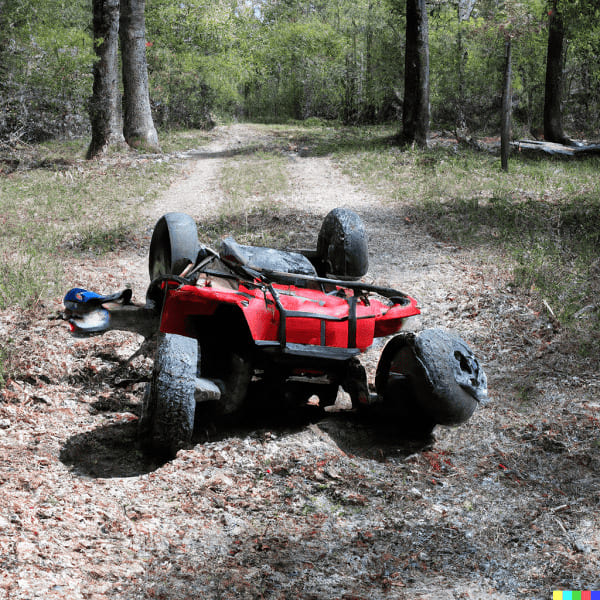
8. Use Extreme Caution in Hilly Areas
Steep hills can be risky, especially if you’re not skilled at navigating them properly. If you’re not careful, you might end up tipping over. To handle hills safely, it’s important to know the right technique. When you’re going up a hill, drive straight up the slope at a steady speed. This helps maintain balance and control.
These vehicles have a relatively high center of gravity with the rider on top. This will result in tipping over in hilly areas. To descend, shift your weight to the rear and ease off the throttle. This prevents the ATV from getting out of control and tumbling down the hill. Avoid hills with slippery surfaces or obstacles. If you feel unstable, get off the ATV and walk it instead.
9. Do Not Carry Passengers
ATVs are usually made for just one person to ride. Carrying a passenger affects the weight distribution and control of the vehicle. Only ride with a passenger if you have a designated two-up model with proper footrests and handholds for the passenger. Children should never ride as passengers due to safety concerns.
10. Avoid Alcohol and Drugs
Operating an ATV requires your full attention and focus. Even small amounts of alcohol or drugs can severely impair your judgment, balance, coordination, and reaction time while operating an ATV. Never consume alcohol or drugs before or during ATV riding. These substances contribute to a significant portion of ATV accidents and fatalities each year. Your safety is the top priority when you’re on an ATV. It’s crucial to be completely in control and aware of what’s happening around you.
Frequently Asked Questions (FAQs)
Conclusion
The implementation of effective strategies is paramount to prevent ATV accidents and ensure the safety of riders and the general public alike. By promoting the use of appropriate safety gear, enforcing age restrictions, maintaining trails to high standards, and enhancing public awareness campaigns, we can collectively reduce the frequency and severity of ATV accidents. It is through a comprehensive approach that combines these strategies that we can pave the way for a safer and more responsible ATV riding environment, safeguarding lives and fostering a sense of shared responsibility among enthusiasts.

About Julia P. Charlotte
Julia P. Charlotte is a social media star with a Bachelor’s in Media Sciences. I am a blogger and affiliate marketer, and loves driving and exploring new vehicles specially ATVs and UTVs. I am an expert at creating content that engages and entertains my followers, and also has a huge following of loyal fans. If you’re looking for someone to follow who knows a thing or two about the social media world, Julia P. Charlotte is the perfect person for you.

